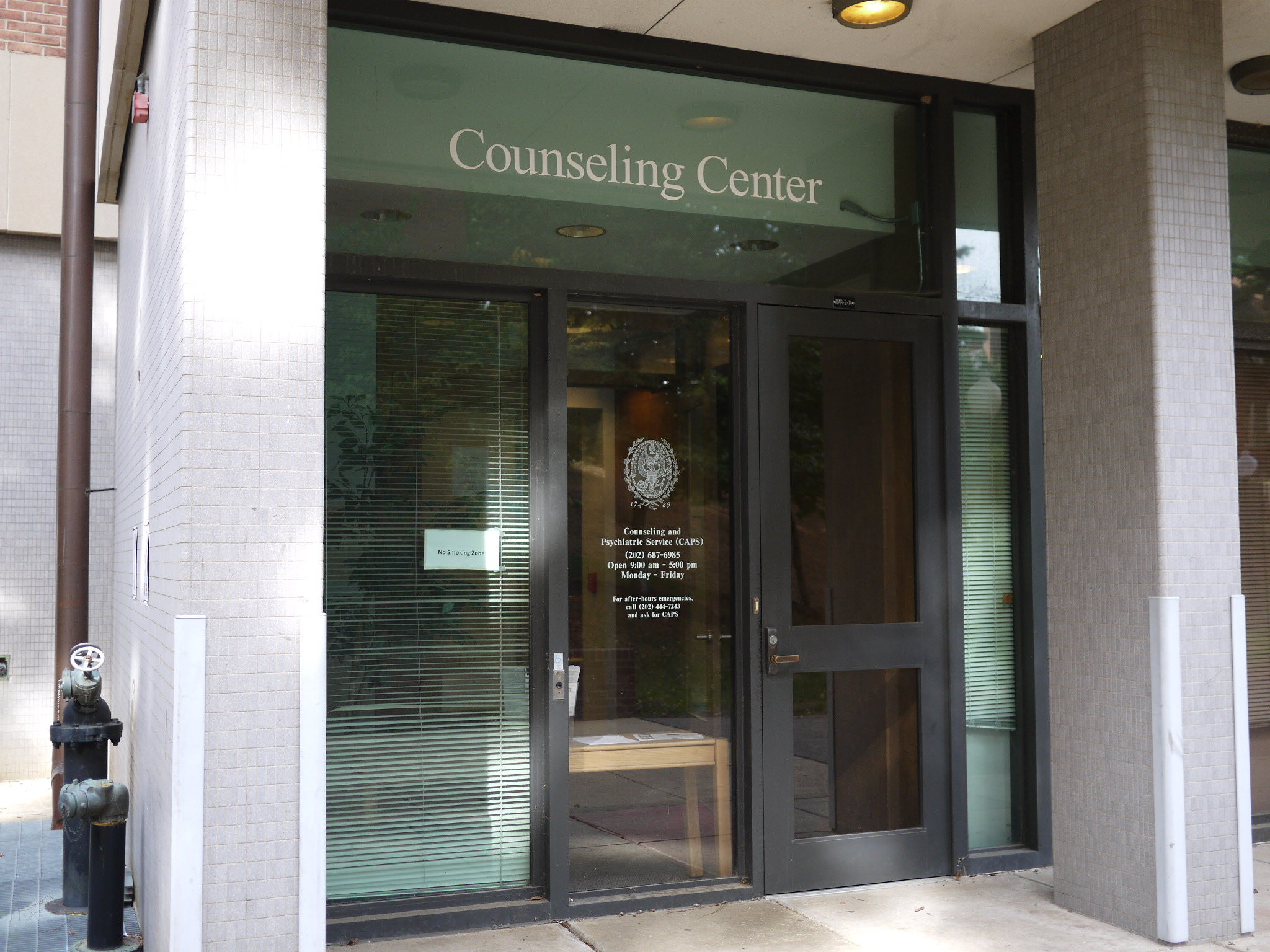My friend once told me that his psychiatrist charges $700 per visit, does not take any insurance, has a six month waiting list, and requires booking three visits at once, one month apart. I thought he was joking, and when I realized he wasn’t, my mouth hung open. I quickly closed it— I figured there were other resources, other ways to get help.
As it turns out, his experience is typical. The average waiting time for adolescent psychiatrists is 50 days, and costs may top hundreds of dollars—sometimes both.
Since most people can’t access these services, we’ve created stopgaps: volunteer-run organizations like Alcoholics Anonymous, emergency rooms, and hotlines. These are meant to keep people from crisis or support them through it until they can get into long-term care, but for many, they are the only resources they will be exposed to.
Here at Georgetown, we have CAPS. CAPS has risen to the challenge of combatting accessibility—speaking in my Foundations of Biology I class, Dr. Meilman, the director of CAPS, said that their staff of psychologists and psychiatrists see over 1,800 students per year. They offer many free services, and those that do come with fees are a fraction of what a practitioner would charge in a private practice
It’s important not to understate the importance of these actions, but it’s equally dangerous to pretend that they will benefit everyone equally.
Rates of mental illness are rising: 15 percent of undergraduate students have diagnosed depression, 12.4 percent reported a clinical anxiety disorder, and 9 percent of undergraduates considered committing suicide during their time at college.
Clearly, help is vital, but there are many barriers preventing students from accessing it. Here at Georgetown, the most applicable hurdle is time.
Georgetown is a traditionally wealthy institution—almost all institutions of higher education are. Still, we have our share of students from variable socioeconomic backgrounds—for example, 13 percent of Georgetown students receive Pell Grants, which are generally awarded students with yearly family incomes under $20,000. For these students, and for most of the student body, employment is a necessity, not a choice.
Nationwide, more than 70 percent of undergraduate students are employed. On top of a full course load, extracurricular activities, and internships, undergraduates are getting busier than ever. We juggle, and we pay the price.
When the Washington Post ranked the stress of students based on cost and prestige, Georgetown ranked eighth. And it’s not just Georgetown—82.8 percent of undergraduates said they felt stressed.
With all the stress of trying to juggle everything, getting help—even if it’s low-cost like going to CAPS— can feel like just another thing to squeeze into your schedule, exhausting and often impossible.
What are schools doing about it? Well, as they say, the first step is to recognize that there is a problem.
Georgetown’s done a pretty good job of this, recently removing accessibility barriers by lowering the cost of CAPS services. Administration has understood the time pressure on students, and appointed in-house clinicians to communities where they feel students may need a bit of extra help—the Georgetown Scholarship Program and the multicultural center. We also have staff members like chaplains and RAs for students to go to, as well as student-run organizations like Active Minds and Project Lighthouse.
These don’t necessarily require carving out the time for an appointment—they are here whenever you need them, and that’s a wonderful thing. A student who works during the day can knock on their RA’s door at night, or email their chaplain.
However, a problem still remains: the hierarchy of student priorities. A student who’s working full-time to pay rent, putting in applications for graduate school, and trying to maintain their academics doesn’t have the luxury of even thinking about their mental health. A student who needs to save money for notebooks or a laptop isn’t going to consider that they might get help with anxiety.
Students are always going to be stressed, but is there a way to overcome that when it comes to seeking help for mental illness?
One solution is, essentially, forcing students to get help, for example: mandatory evaluations as part of classes or clubs. This would certainly expose more students to the mental health system, but this would create problems. For example, the idea of “forcing” students to get help would create a more negative view of the mental health system, perhaps discouraging students from being honest in evaluations. Besides, getting help should be an individual decision, not forced—a person has the right to choose to remain ill, whether or not we approve of that choice. Getting help needs to be a personal choice, for students to come to when they’re ready.
So how do we help students be ready? It might be hard, but I think it’s necessary: society needs to make a cultural shift in our priorities. If we come to value mental health more, there will be more dialogue surrounding it and it would become normalized, and students would automatically try to access resources when they feel their mental health decline. It would be like having strep throat—you would go see your doctor. If you were feeling depressed—you would go to the doctor, therapist, or other resource appropriate for you.
This shift is happening on university campuses throughout the world—including Georgetown. Laws such as FERPA and HIPPA have been passed to keep patient confidentially while keeping students safe, and Georgetown is going above and beyond by establishing organizations like Project Lighthouse and making a substantial effort to make mental health more normalized and accessible for students. If this trend continues, barriers to treatment access may soon become a thing of the past.
Rebecca is a freshman in the college and the author of the column, Open Access, for the Voice.



